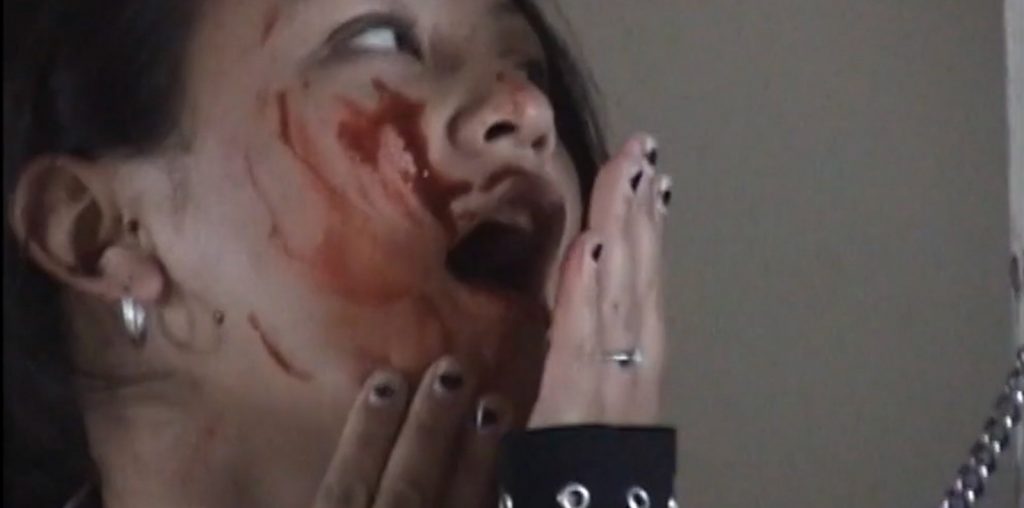
Throughout cinematic history, a phenomenal correlation exists between the quality of zombie movies and a republican president in the White House. Beginning just before Nixon’s election in 1968 with George A. Romero’s Night of the Living Dead and continuing through Bush Jr.’s recent term with 28 Days Later and the remake of Romero’s Dawn of the Dead, an unusual parallel exists between the GOP in the oval office and stimulating zombie movies.
Unlike any other cinematic monster, the zombie represents any group of evil outsiders whose agenda is easily spread. Groups like these just seem to flourish when there is a republican in the White House. The republican fear within the moviegoer is compounded by the images he or she sees on the screen, making these flesh-eaters that much more horrifying, terror-inducing and relevant.
A few exceptions do exist to this rule, however, the greatest zombie movies were created under republican representation while the weakest were under Carter and Clinton.
No zombie movie counts before 1968.
Night of the Living Dead established the zombie movie formula: the world is normal; now there are zombies; hide from zombies; they don’t like fire; if the zombies don’t kill you, another human will.
NOTLD examined humanity on two levels. On one level, a microcosm of otherwise normal people are placed in close confines and forced to work together to overcome the zombie threat. These people eventually splinter from and fight with each other out of selfishness and naiveté, resulting in their own eventual demise. On the second level, humanity is examined because at its core, this movie is about people fighting people. True, some of the people used to be, and technically still are dead, however there is still one group of people against another.
Some people liken the zombies in NOTLD to the red scare and the fear that Americans had surrounding communism. People in the late 60s were still concerned that their way of life was being infiltrated. People feared that evil messages were corrupting other people’s minds via songs, movies and books. Just like communist propaganda was feared to be spreading, one little bite from a zombie transformed an otherwise regular person into an amoral murderous cannibal.
It’s a metaphor, get it?
Whether or not zombies were communists, or if the commentary on humanity was as prevalent as this article implies, NOTLD struck a cord with moviegoers. This movie was not an immediate smash hit, but it grew a following at drive-in theaters and from midnight screenings. NOTLD took a little to scare its audience just like it took time for the newly elected Richard Nixon to put fear into his audience.
Whatever the schism of the late 60s that was represented onscreen, people identified with it, and that legacy gets attributed to the man in office. As under any president, the American people had varying opinions toward Kennedy and Johnson, but the rift in the nation under Richard Nixon helped to make Romero’s zombies so incredibly terrifying. The fear of each other, of neighbors, of family members really helped the catharsis of watching zombie movies. Because of the fear brought out by Night of the Living Dead and Nixon’s time in office, a precedent was set making zombie movies more compelling when under republican presidencies.
Fear still exists no matter what party is in office, but with the exception of “Dawn of the Dead” under Jimmy Carter, there is no zombie fear quite like republican zombie fear.
Carter’s America was watching the dollar. Inflation, unemployment and gas shortages were at the forefront of people’s minds in this post-Vietnam, disco-dancing era. This president’s legacy is always associated with one word: malaise. The nation was not terrified so much as it was uneasy.
The zombie film market responded in kind with “Dawn of the Dead.” In this film, the good guys get trapped in a shopping mall while the zombies are outside, trying to get in. Though this movie was good in spite of a democrat being in office, its obvious knock on consumerism and spending values made the humor shine through the carnage.
Perhaps responding to the need for scarier zombie movies, the voting public turned out in 1980 and 1984 to put republican Ronald Reagan in office for eight zombie-filled years. Within these two terms, moviegoers were treated to Day of the Dead and Return of the Living Dead. There were others of course, but historically, they do not stand out.
The final installment in George Romero’s trilogy of the dead restored the fear that so well accompanies a republican in the White House. In Day of the Dead, the good guys capture a zombie to study it and “Bub” practically becomes their pet. If the humanity of zombies being explored in Night of the Living Dead reflects a frightening tension among people’s social values, then by the 80s those concerns are reflected by the single zombie, Bub.
Imagine that every fear brought out from opposing opinion is represented in Bub. Imagine that Bub is the metaphor for the nation’s values under Reagan’s America. Now imagine that Bub represents the minority, the different, the downtrodden and everything scary that might be down the street.
Bub was chained to a wall and forced to conform.
As represented in Day of the Dead, the good guys were scary too. This was not the social comment on humanity in NOTLD. The people were scary in the way that zombies were supposed to be scary. Under Reagan, the monsters could be anyone.
In Return of the Living Dead, punk kids deal with the speaking undead. True, these zombies mostly utter, “Brains,” before devouring some poor sap, but the progression on behalf of the zombies is worth noting. The world of ROTLD is a place where people have seen zombie movies. ROTLD insists that the events depicted really happened and that previous zombie movies were based on true events.
The fear of the nation in the 80s is reflected in ROTLD, not only by the zombies, but also in its superfluous use of nuclear weapons. The fear created from watching zombie movies comes in part from fearing evil people (the other part comes from the fear of being eaten by the undead.) Another palpable fear under Reagan was that the Cold War was going to end in a big, fiery nuclear ball. In ROTLD, the use of nuclear weapons only served to worsen the zombie problem. This reflects the fears of a nation that found nuclear weapons to be impractical and completely necessary to protect them from whatever group the zombies were representing at any given moment.
Just before George Bush Sr.’s inauguration, “Return of the Living Dead Part II” was released. Since this movie adds nothing to the original story, “Return of the Living Dead Part II” does not count. What movie does count is the 1990 remake of “Night of the Living Dead”.
The main thing that changes from a zombie movie under Nixon to a zombie movie under Bush was the role of the female lead, Barbara. This character goes from being a nutty, weak, irrational girl, under Nixon, to being a strong, capable heroine under Bush. The zombie movie connection to republican presidents has its exceptions and degrees. In this case, the degree of scary shows that Nixon was more frightening than Bush.
I don’t know, but I liked the first Barbara better.
Here we are in 2004 with a republican president and scary zombie movies opening all the time. 28 Days Later was scary. The remake of Dawn of the Dead was scary. Time and history will tell what they mean, but one thing is certain: people are afraid again. It is an election year and that means that more zombies may be on the way. Voting on any political issue may serve a certain vague purpose, but voting on the side of pop culture serves a clear purpose.
Vote republican, and the dead will rise.

